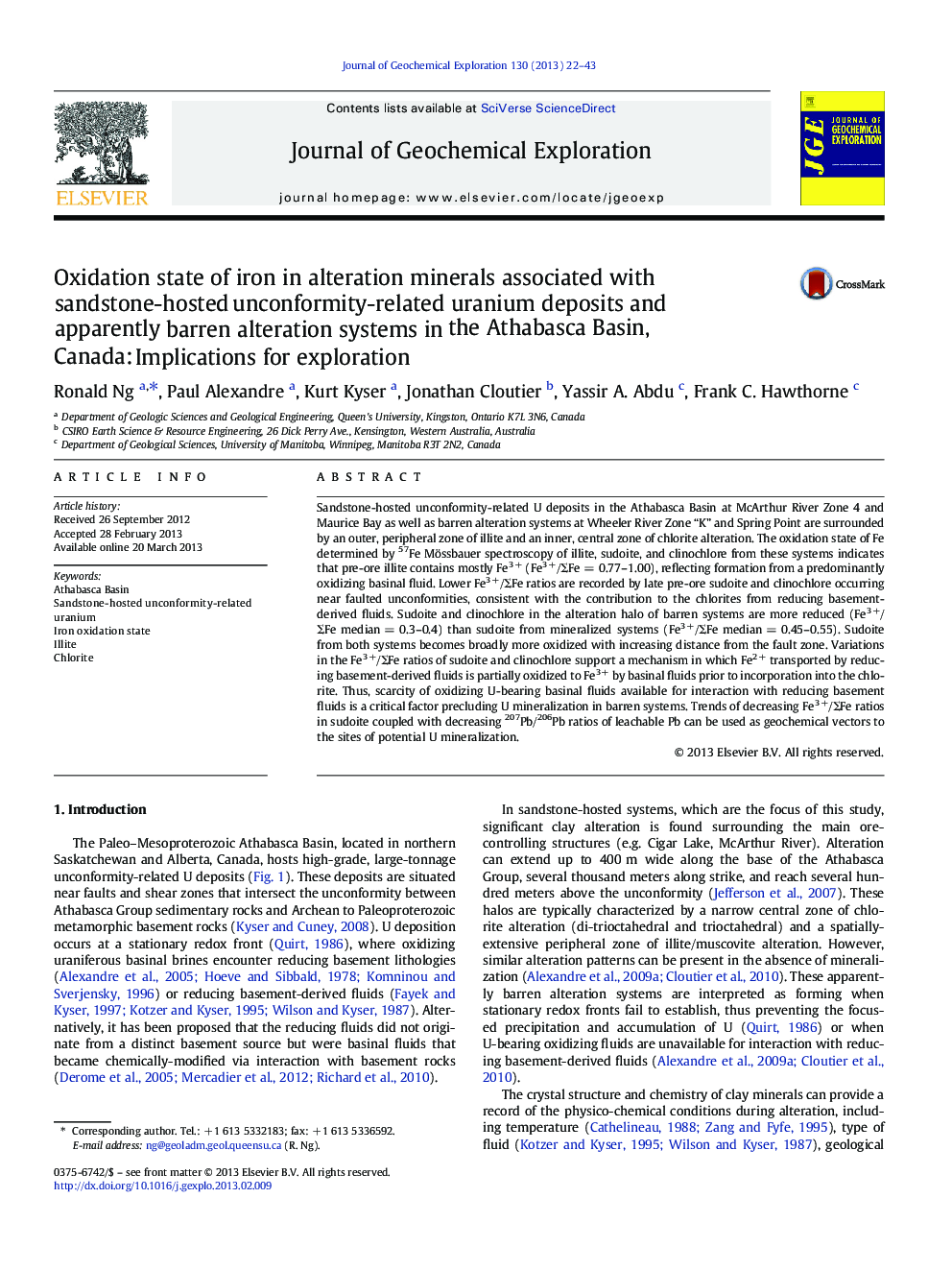| Article ID | Journal | Published Year | Pages | File Type |
|---|---|---|---|---|
| 4457548 | Journal of Geochemical Exploration | 2013 | 22 Pages |
•Oxidation state of Fe in clay alteration is measured by 57Fe Mössbauer spectroscopy.•Mineralized and barren Athabasca sandstone-hosted alteration systems are compared.•Chlorites from mineralized systems contain greater structural Fe3 + than barren ones.•Absence of oxidizing basinal fluids precluded U mineralization in barren systems.•Trends of decreasing Fe3 +/ΣFe and 207Pb/206Pb ratios can vector to U mineralization.
Sandstone-hosted unconformity-related U deposits in the Athabasca Basin at McArthur River Zone 4 and Maurice Bay as well as barren alteration systems at Wheeler River Zone “K” and Spring Point are surrounded by an outer, peripheral zone of illite and an inner, central zone of chlorite alteration. The oxidation state of Fe determined by 57Fe Mössbauer spectroscopy of illite, sudoite, and clinochlore from these systems indicates that pre-ore illite contains mostly Fe3 + (Fe3 +/ΣFe = 0.77–1.00), reflecting formation from a predominantly oxidizing basinal fluid. Lower Fe3 +/ΣFe ratios are recorded by late pre-ore sudoite and clinochlore occurring near faulted unconformities, consistent with the contribution to the chlorites from reducing basement-derived fluids. Sudoite and clinochlore in the alteration halo of barren systems are more reduced (Fe3 +/ΣFe median = 0.3–0.4) than sudoite from mineralized systems (Fe3 +/ΣFe median = 0.45–0.55). Sudoite from both systems becomes broadly more oxidized with increasing distance from the fault zone. Variations in the Fe3 +/ΣFe ratios of sudoite and clinochlore support a mechanism in which Fe2 + transported by reducing basement-derived fluids is partially oxidized to Fe3 + by basinal fluids prior to incorporation into the chlorite. Thus, scarcity of oxidizing U-bearing basinal fluids available for interaction with reducing basement fluids is a critical factor precluding U mineralization in barren systems. Trends of decreasing Fe3 +/ΣFe ratios in sudoite coupled with decreasing 207Pb/206Pb ratios of leachable Pb can be used as geochemical vectors to the sites of potential U mineralization.
